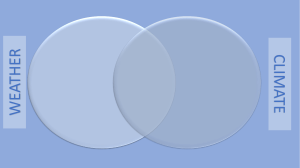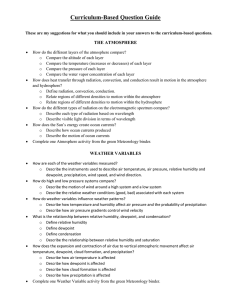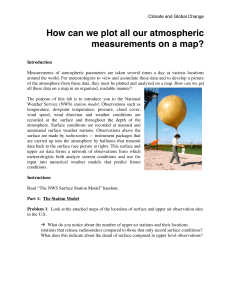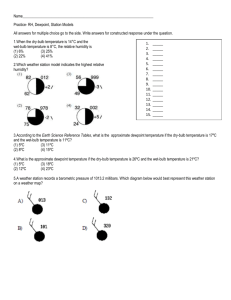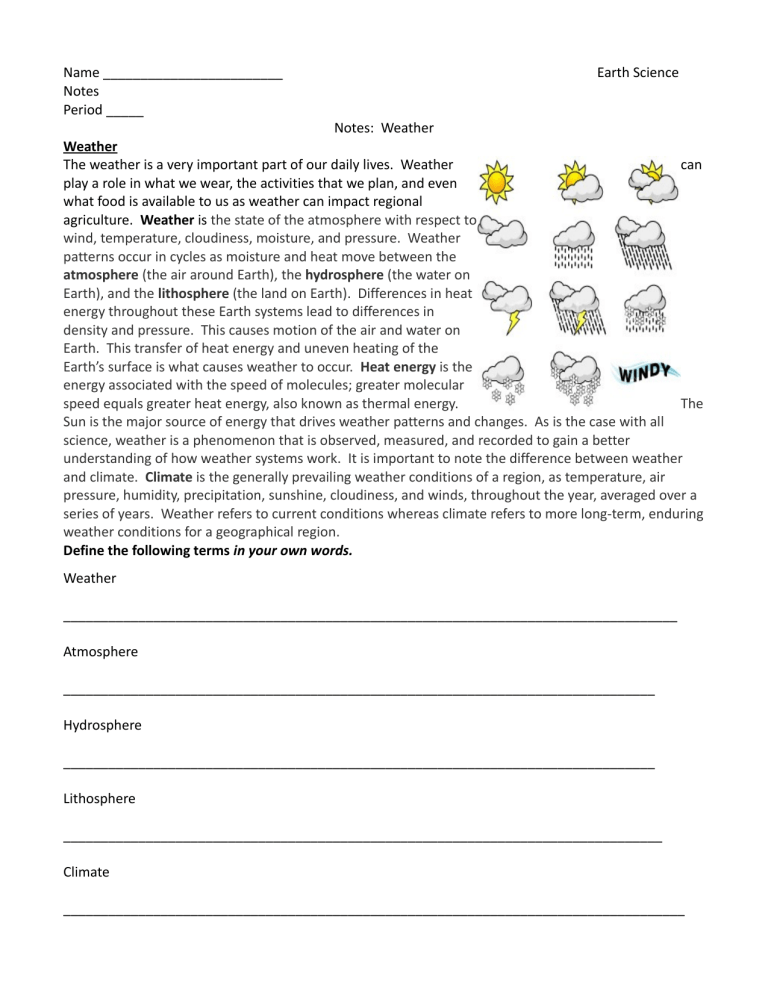
Name ________________________ Notes Period _____ Earth Science Notes: Weather Weather The weather is a very important part of our daily lives. Weather can play a role in what we wear, the activities that we plan, and even what food is available to us as weather can impact regional agriculture. Weather is the state of the atmosphere with respect to wind, temperature, cloudiness, moisture, and pressure. Weather patterns occur in cycles as moisture and heat move between the atmosphere (the air around Earth), the hydrosphere (the water on Earth), and the lithosphere (the land on Earth). Differences in heat energy throughout these Earth systems lead to differences in density and pressure. This causes motion of the air and water on Earth. This transfer of heat energy and uneven heating of the Earth’s surface is what causes weather to occur. Heat energy is the energy associated with the speed of molecules; greater molecular speed equals greater heat energy, also known as thermal energy. The Sun is the major source of energy that drives weather patterns and changes. As is the case with all science, weather is a phenomenon that is observed, measured, and recorded to gain a better understanding of how weather systems work. It is important to note the difference between weather and climate. Climate is the generally prevailing weather conditions of a region, as temperature, air pressure, humidity, precipitation, sunshine, cloudiness, and winds, throughout the year, averaged over a series of years. Weather refers to current conditions whereas climate refers to more long-term, enduring weather conditions for a geographical region. Define the following terms in your own words. Weather __________________________________________________________________________________ Atmosphere _______________________________________________________________________________ Hydrosphere _______________________________________________________________________________ Lithosphere ________________________________________________________________________________ Climate ___________________________________________________________________________________ Conclusion and Practice questions for Review Note – these questions are designed to help you prepare for both your unit exam and your final exam. Success on these questions is a good indicator of how well you will do on subsequent assessments. The cross section below shows a house on the shore of Lake Ontario in August. 1. Under which conditions would the wind shown in the cross section most likely occur? (1) at 2 a.m., when the air over land is 70°F and the air over the lake is 80°F (2) at 6 a.m., when the air over land is 70°F and the air over the lake is 70°F (3) at 2 p.m., when the air over land is 80°F and the air over the lake is 70°F (4) at 10 p.m., when the air over land is 70°F and the air over the lake is 72°F 2. The upward movement of air in the atmosphere generally causes the temperature of that air to (1) decrease and become closer to the dewpoint (2) decrease and become farther from the dewpoint (3) increase and become closer to the dewpoint (4) increase and become farther from the dewpoint A weather station model is shown below. 3. What is the barometric pressure indicated by this station model? (1) 0.029 mb (3) 1002.9 mb (2) 902.9 mb (4) 1029.0 mb 4. Which weather instrument is used to measure wind speed? (1) anemometer (2) wind vane (3) psychrometer (4) thermometer 5. What is the relative humidity when the dry-bulb temperature is 16°C and the wet-bulb temperature is 14°C? (1) 90% (2) 80% (3) 14% (4) 13% 30. A weather station at the lighthouse records a temperature of 36°F and an air pressure of 1016.4 mb. Using the proper weather map symbols, place the following information in the correct positions on the weather station model shown below. • Present weather • Dewpoint • Air pressure • Wind direction • Wind speed
